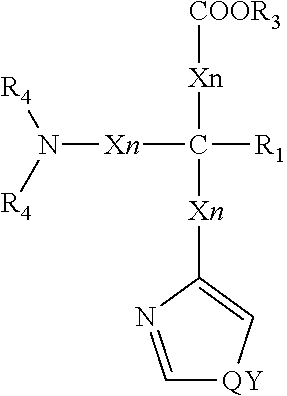Method of inhibiting copper deposition on hair
a technology of copper deposition and hair, which is applied in the field of inhibiting can solve the problems of hair damage, copper deposition on hair is particularly problematic, and the use of chelants to sequester trace redox metals is often ineffective,
- Summary
- Abstract
- Description
- Claims
- Application Information
AI Technical Summary
Benefits of technology
Problems solved by technology
Method used
Image
Examples
examples
[0172]The following examples illustrate embodiments of the invention described herein. The exemplified shampoo compositions, conditioner compositions, and / or leave-on treatments can be prepared by conventional formulation and mixing techniques. It will be appreciated that other modifications of the shampoo compositions, conditioner compositions, and / or leave-on treatments within the skill of those in the formulation art can be undertaken without departing from the spirit and scope of this invention. All parts, percentages, and ratios herein are by weight unless otherwise specified. Some components may come from suppliers as dilute solutions. The amount stated reflects the weight percent of the active material, unless otherwise specified.
[0173]The following are non-limiting examples of shampoo compositions, conditioner compositions, and leave-on treatments described herein.
Shampoo Examples
[0174]
ComponentsEx. 1Ex. 2Ex. 3Ex. 4Ex. 5Ex. 6Ex. 7sodium lauryl ether sulfate—610669—(SLE3S)Sod...
PUM
| Property | Measurement | Unit |
|---|---|---|
| wt % | aaaaa | aaaaa |
| wt % | aaaaa | aaaaa |
| melting point | aaaaa | aaaaa |
Abstract
Description
Claims
Application Information
 Login to View More
Login to View More - R&D
- Intellectual Property
- Life Sciences
- Materials
- Tech Scout
- Unparalleled Data Quality
- Higher Quality Content
- 60% Fewer Hallucinations
Browse by: Latest US Patents, China's latest patents, Technical Efficacy Thesaurus, Application Domain, Technology Topic, Popular Technical Reports.
© 2025 PatSnap. All rights reserved.Legal|Privacy policy|Modern Slavery Act Transparency Statement|Sitemap|About US| Contact US: help@patsnap.com



